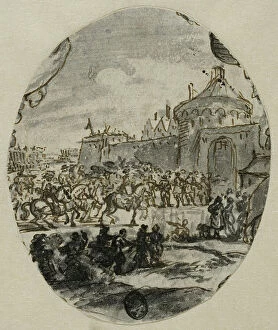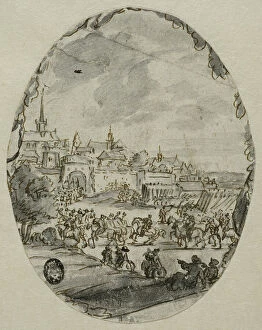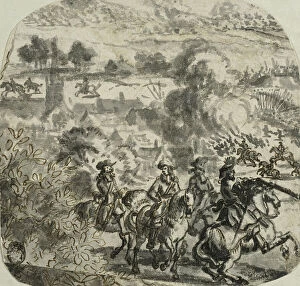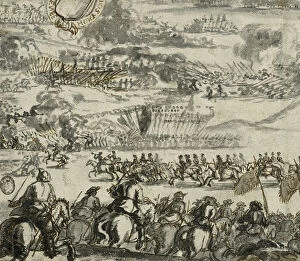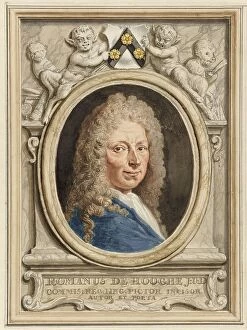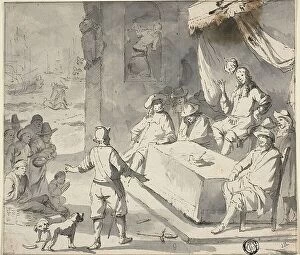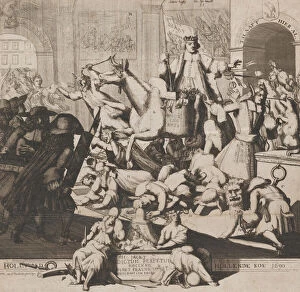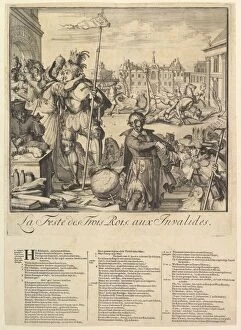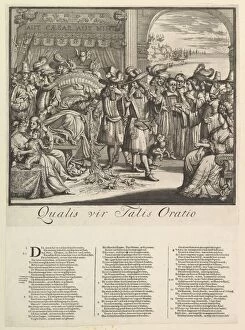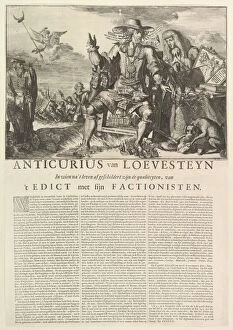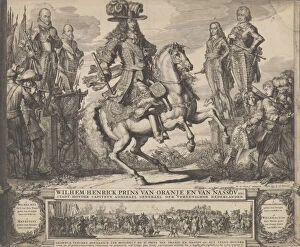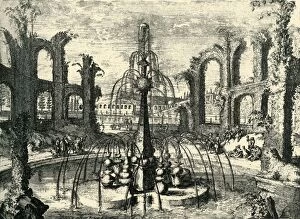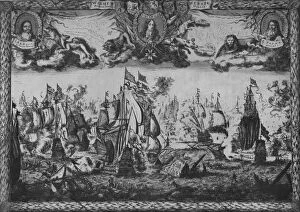Romein De Hooghe Collection
Romeyn de Hooghe, a renowned Dutch artist and engraver of the late 17th century, left an indelible mark on the art world with his intricate and captivating works
For sale as Licensed Images
Choose your image, Select your licence and Download the media
Romeyn de Hooghe, a renowned Dutch artist and engraver of the late 17th century, left an indelible mark on the art world with his intricate and captivating works. One such masterpiece is "Hollands Hollende Koe" (Holland's Running Cow), created in 1690 by Gaspar Bouttats but engraved by de Hooghe himself. Another notable piece attributed to de Hooghe is "Paye qui Tombe: Die eerst valt betaelt de Speelman, die laest" (The one who falls first pays the musician last). This artwork showcases his exceptional ability to capture movement and action in a dynamic composition. In "Le Feste des Trois Rois" (The Feast of Three Kings), we witness de Hooghe's talent for depicting grand celebrations. The attention to detail and vibrant colors transport us into a festive atmosphere filled with joy and merriment. "L'Europe Allarmee" (Europe Alarmed) reveals de Hooghe's political commentary through art. His satirical depiction of Europe engulfed in chaos serves as a reminder of the turbulent times he lived in, where war and conflict were prevalent. One cannot overlook "Panurge seconde, " another thought-provoking creation by Romeyn de Hooghe. This allegorical representation challenges viewers to question societal norms and conventions while encouraging individuality and free thinking. With "Qualis vir Talis Oratio" (Such Man, Such Speech), de Hooghe explores the relationship between character traits and speech patterns. Through this work, he invites us to reflect upon how our words can reveal our true nature. Among his extensive body of work is also "Anticurius van Loevesteyn, " showcasing his skillful portraiture techniques that bring historical figures to life with remarkable accuracy.

